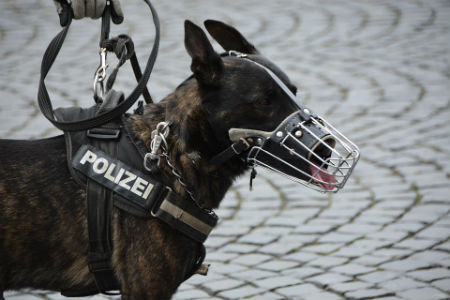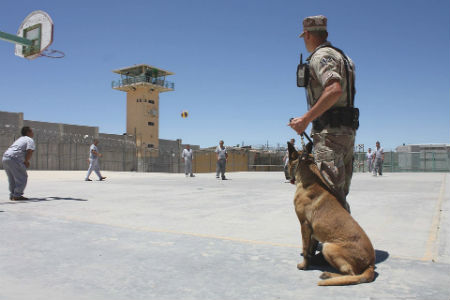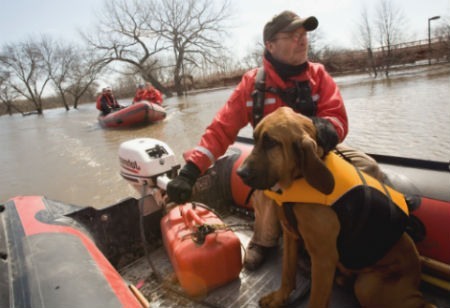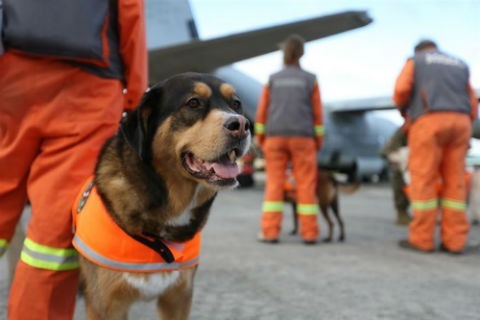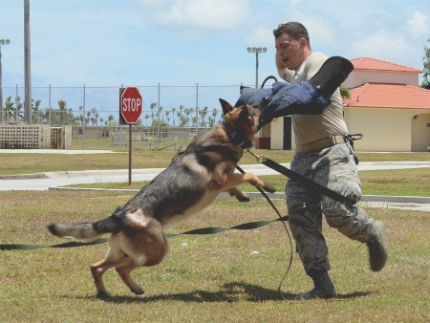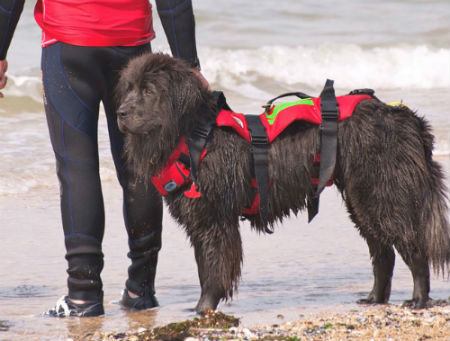Instinct and smell are two of the main qualities of the dogs of which the human being is used. In this way, it is not only your best friend, but the most efficient and trained for endless work. The dogs are in the top of the ranking of the best pet for their indisputable fidelity, nobility, intelligence, skills and many talents that bring them closer to people to give them company and serve both in their home and in other environments where they develop. The list of
trades, works and professions that a dog can play. There are dogs of therapy, service, grazing, company, emotional assistance and even disease detection, all incredible functions that require training and dedication, both of the owner and the animal.
But in this article we are going to refer to the
Police dogs, that noble profession that is associated with risks, adrenaline and, especially, a lot of intuition and training to achieve the objectives of the police force and achieve the tasks assigned to the CAN. Police dogs are trained to fulfill several tasks, specifically in the area of public security, police and citizen protection, and where the subdivision of tasks is so extensive that we can virtually talk about expert dogs and specialists in one or several trades related to police work.
What are the best breeds of police dogs?
In this aspect of the topic, there are many opinions that have been generated around
The dog breeds that work best for police bodies, especially because there are many works that police dogs can do, whose classification has been carried out by veterinary experts, coaches and connoisseurs of the behavior and characteristics of each caste. Although the key is in the character of the animal.
For example:
- Police dogs par excellence are races German shepherd, ROTTWEILER, Belgian shepherd, Dutch pastor and the Labrador retriever.
- For him Public Order Control The most trained races are Doberman, Rottweiler, Boxer, Schnauzer and those mentioned above.
- If the task is Search for corpses, the best to carry it out are Bloodhound, Belgian shepherd and Beagle.
- If they are going to be trained as tracking dogs, any of the aforementioned races are efficient for this work, and if it is about assigning the detection of illegal, explosive or false tickets, the most used races are Cocker SpanieL, Foxhound, Weimaraner, Springer Spaniel English, Schnauzer, Golden Retriever, Belgian shepherd, German shepherd, etc.
Really,
The utility that a police dog can have can be classified into specific groups:
- The detector dogs, which can identify through smell the existence of explosives, chemical or narcotic substances, mines, strange animals, etc.
- The rescue dogs They also have a special function in security forces, especially when there are natural catastrophes such as landslides, collapse of buildings, lands of land, avalanches, earthquakes, tsunamis, etc.
- They are also Dogs called Intervention, which can participate in citizen protection, in disturbances, search and persecution of antisocial and rescue of hostages.
The best police dogs are playful, strong and active
We already mentioned that
The key to a good police dog It is the character, because depending on this, your training and performance will be more or less effective. But there is another essential characteristic, such as the taste for the game, because this is the main basis of its training, and it must be strong and active. It is also important that you have developed your hunting instinct, since several of the functions they will perform will be to follow traces, pursue and attack.
How to train a police dog?
The training and training of police dogs is hard And it begins since they are puppies of about eight or nine months, and extends for approximately a continuous year with the idea that they manage to assimilate fundamental tasks for police and state security forces. This training is done by professionals and requires several stages that include from the
Basic training in obedience even the most concrete with which they can make true feats.
Police dogs are medium -sized, agile, with competences for adaptation and learning so that they can assimilate skills such as defense and attack, because any dog trained for these tasks must have the capacity to serve from guards to attack an aggressor and immobilize it. Exercises to train police dogs in these two tasks focus on
teach them where and how to bite a person without causing mortal damage. Another task that a police dog must fulfill is that of socialization, so that to the extent that it becomes familiar with the environment obeys the most elementary orders. In this training the dog already shows its ability to belong to a police force or not. After a year of training in obedience and socialization, comes the stage of individual training with its instructor, who will ensure his physical and psychological conditioning. The physical training of a police dog is highly demanding, for which appropriate spaces are required where the animal can run at high speed, jump, overcome or overcome obstacles, rheat inside tunnel or at great heights.
Police dogs are trained to be obedient to the smallest sign of their partner. The instruction begins in the most basic how to throw a ball to bring it to the coach, and move forward in the basic orders to do their work, even under conditions of stress or danger.
Obedience is the essential factor so that the dog's work is efficient. Other specific training are related to the characteristics of the dog, and in the case of training a police dog, depending on the field in which it will develop, the training will be related to the development of intuition or smell, in case it is assigned the task of detecting explosives, toxic substances, following traces of missing persons, pursuing criminals, detecting corpses, detecting people in debris, detecting people in debris, detecting people in debris Mud, snow, etc.
